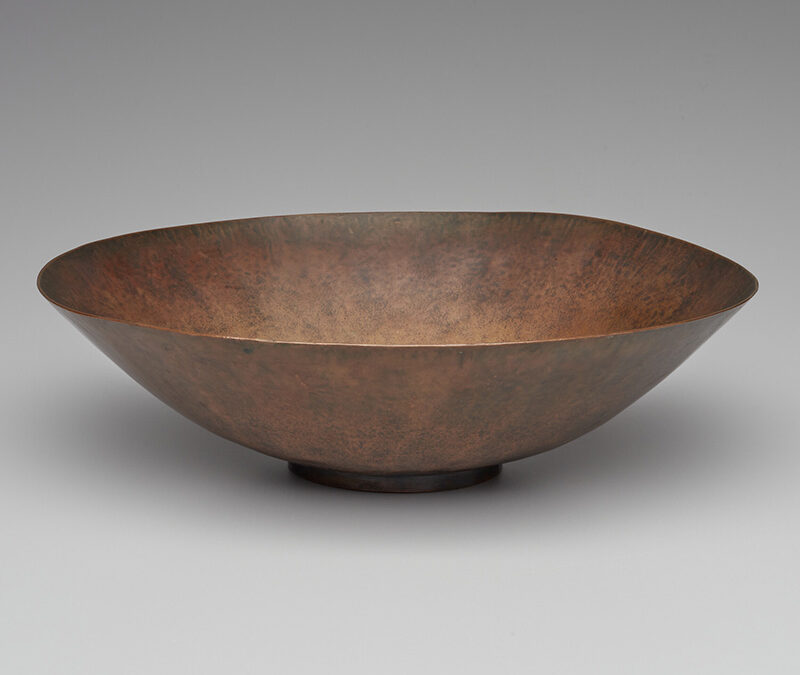Untitled (Bowl)

| Maker | Ruth Asawa |
| Date of Creation | 1946 |
| Location | Milwaukee, Wisconsin |
| Materials | Copper |
| Institution | Milwaukee Art Museum |
| Credit Line | Purchase, with funds from the Demmer Charitable Trust in honor of Dr. Charles Brindis and Dr. Robert Goisman |
| Accession Number | M2020.44 |
| Photo Credit | John R. Glembin/Milwaukee Art Museum |
Known for her intricate wire sculptures, pioneering artist Ruth Asawa produced this copper bowl as an expression of friendship and gratitude during her brief yet formative time in Milwaukee. Born in California, a young Asawa moved to Wisconsin following her internment with fellow Japanese-Americans by the United States government during World War II. She enrolled in Milwaukee State Teachers College with the plan of becoming an art teacher. Asawa’s courses electrified her—she once described her teachers collectively as “a ball of fire”—and she found community and connection with the Sieverts, a German-Jewish family in the city. When she was denied a student-teacher position in the public school system out of fears of anti-Japanese sentiment, however, Asawa’s plans were dashed. Instead she applied to the avant-garde art school Black Mountain College in North Carolina, and the Sieverts wrote a letter of recommendation. She made this humble bowl for them in thanks. Asawa’s decision to leave Milwaukee for BMC was a turning point. Studying under figures such as Josef Albers, Buckminster Fuller, and Merce Cunningham opened her eyes to a creative world of material exploration. It was during this time that she began weaving wire, the first step toward establishing her lifelong artistic practice. Asawa’s bowl is a reminder of the artist’s perseverance in the face of great challenges and also reflects the complexities of Wisconsin and Milwaukee in this period—a place where a young artist could face adversity, and also build a foundation for the pioneering work to come. Produced in 1946 before she left Wisconsin, this small bowl suggests that the artist was already thinking creatively about shape and material while she was in Milwaukee. She formed the bowl by planishing a sheet of copper, a term that refers to the process of hand-hammering and smoothing the metal to achieve the desired shape—in this case, a gentle and open curve. Asawa returned repeatedly to basket and bowl shapes in her looped wire sculptures, and this vessel can be understood as an early exercise in the development of form.

